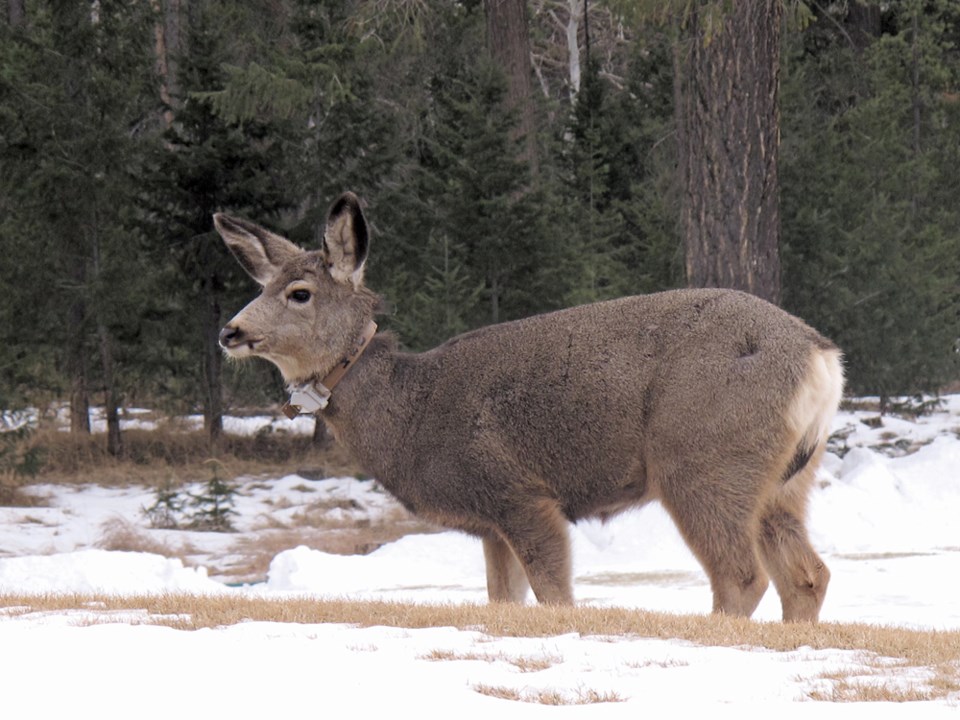It is pretty common to see both mule and white-tailed deer, but we know surprisingly little about these animals in the park.
This is starting to change with Jasper’s deer monitoring program. Female deer of both species are being fitted with radio collars to find out where they are going. Once enough deer are collared this will also help us get a better idea of how many deer there are by looking at the number of young born and the mortality of adult females.
The deer collaring program was started in collaboration with University of Calgary Masters student Colleen Arnison. Now in its third season, Parks Canada biologists and a few dedicated volunteers are continuing this study. Deer traps have been set out in some key locations in the Three Valley Confluence to capture and collar female mule and white-tailed deer. These traps are monitored regularly following strict protocols for the welfare of the animals.
While this study is relatively new, we have already learned some interesting things about Jasper’s deer. Data from GPS collars on both species have shown them using distinct summer and winter habitat. Mule deer travel great distances, spending their winters near the townsite then travelling as far away as Maligne Lake or up the Whirlpool River Valley, distances of over 50 km. In at least one instance this distance was covered in only 16 hours, and the deer was travelling with her fawn!
So far white-tailed deer in the study have moved only short distances, remaining in the Three Valley Confluence. Whether white-tailed deer also travel great distances between seasons is yet to be determined; we hope to find out once we have more collared.
Jasper’s deer monitoring program is not only giving us insight into what the deer are doing, but is also contributing to actions of the caribou conservation program. One of the five key threats to woodland caribou in Jasper National Park is altered predator-prey dynamics. The number of deer and elk in the valley can influence the number of predators. If there are a lot of deer and elk, it supports larger populations of predators, like wolves or cougars. More predators mean an increased risk of predation on caribou. To address this threat, an elk monitoring and management program has been in place for a number of years. The deer monitoring program is another action to support reducing or eliminating this threat.
Parks Canada
Special to the Fitzhugh

